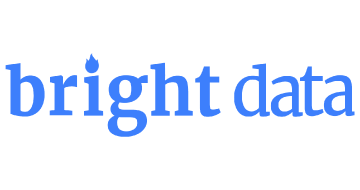
| Starting price | Varies |
|---|---|
| Free trial | Yes, 3 days |
| Free version | No |
Analytics software enables organizations to make actionable insights and data-driven decisions. It enables users to extract meaningful information from vast data sets, identify trends, and gain a competitive advantage. Whether you’re a small or large business, using analytics software can increase operational efficiency, optimize strategies and drive growth. We understand the importance of choosing the right analytics software for your specific needs. Our platform helps you find the best value software to meet your goals.
Data is everywhere, but turning it into action requires the right tools. We’ve rounded up the best business analytics tools of 2025. These tools will help you cut through the noise, track what matters, and stay ahead of the curve.

| Starting price | Varies |
|---|---|
| Free trial | Yes, 3 days |
| Free version | No |
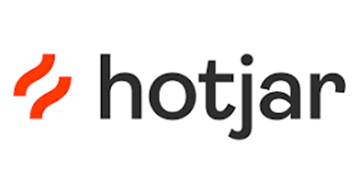
| Starting Price | $39/ month |
|---|---|
| Free Trial | 15 days |
| Free Version | Yes |
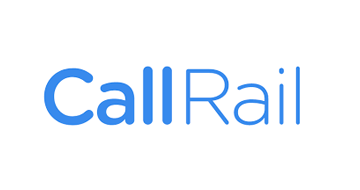
| Starting Price | $45/mo. |
|---|---|
| Pricing Model | Subscriber based |
| Free Trial | Yes |
| Free Version | No |
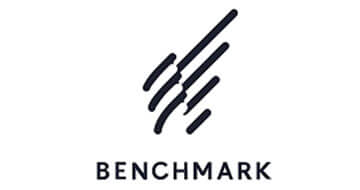
| Starting price | $15/mo |
|---|---|
| Pricing model | Subscriber based |
| Free Trial | No |
| Free Version | Yes |

| Starting price | $119.95/mo |
|---|---|
| Pricing model | Per User |
| Free Trial | 7-day |
| Free Version | Yes (limited functionality) |

| Starting price | $199/mo |
|---|---|
| Pricing model | Quotation based |
| Free Trial | Yes, 7 days |
| Free Version | Yes |
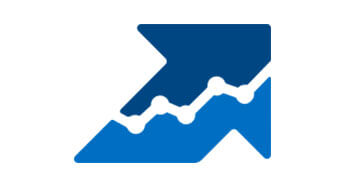
| Starting price | $69/mo |
|---|---|
| Pricing model | Per User |
| Free Trial | No |
| Free Version | Yes |
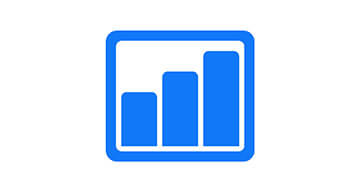
| Starting price | $18.6/mo |
|---|---|
| Pricing model | Per User |
| Free Trial | 14-day |
| Free Version | Yes |
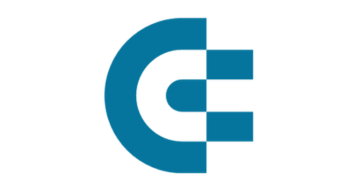
| Starting price | $49 |
|---|---|
| Free Trial | 14-day |
| Free Version | No |
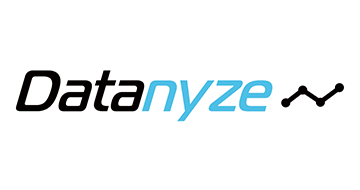
| Starting Price | $29/mo |
|---|---|
| Pricing Model | Subscriber based |
| Free Trial | Yes |
| Free Version | No |
Semrush stands out for its depth and versatility. It blends SEO, PPC, content, and competitor data into sleek, customizable reports. These insights give you a 360° view of your digital performance. Semrush also offers tools for content marketing, advertising research, social media tracking, and even market intelligence.
| Pros | Cons |
|---|---|

Hotjar is one of the best analytics software for small businesses and medium-sized enterprises. With heatmaps, session recordings, and real-time feedback tools, it turns guesswork into clarity. Its simplicity also makes it a top choice for inexperienced teams. It’s incredibly easy to set up and use.
| Pros | Cons |
|---|---|

Data, reporting, and analytics software help businesses turn raw numbers into actionable insights. These tools gather data from various sources like websites, CRMs, marketing platforms, and sales systems. Then, they organize and visualize that data through reports and dashboards. The goal is to help users make smarter decisions, faster.
Every department has something to gain. Marketing teams use these tools for KPI tracking and reporting. Sales teams rely on them for lead performance, pipeline analysis, and forecasting. Finance uses them to monitor revenue trends, budgeting, and cash flow. Operations teams lean on them to track efficiency and identify bottlenecks.
To use analytics tools, you have to connect them to your essential data sources like Google Analytics, HubSpot, Salesforce, or whatever tools you already use. Once connected, the software automatically gathers your data, so you don’t have to.
From there, you build custom dashboards to visualize the metrics that matter most. For instance, you might want to track sales by region, see how users interact with your site, or measure campaign performance. Most platforms also offer automated reports that send updates on a schedule. You also get alerts that notify you when something shifts.
You don’t have to wait for weekly reports anymore. Real-time dashboards show you what’s happening right now whether it’s traffic changes or sales trends. This helps you react faster, adjust quickly, and avoid surprises.
Data removes the guesswork. These tools show you what’s working and what’s not, so you can make clear choices fast. Whether it’s launching a campaign or managing budgets, you’ll know exactly what to do next.
Every team has goals. Data tools track progress in real-time and highlight what’s working or needs improvement. KPIs become clear, keeping everyone focused and accountable.
You can see which activities bring the best results and which waste resources. This helps you spend smarter, optimize your budget, and grow more steadily.
Forget juggling spreadsheets and last-minute reports. Automation handles data updates, dashboard refreshes, and report generation. Your team saves time and can focus on analyzing data and making improvements.
These are the must-haves. If a tool doesn’t offer these, it’s probably not worth your time.
1. Data Integration: This means the software connects data from different platforms like CRMs, ad tools, and finance software.
2. Drag-and-Drop Dashboard Builders: Easily build and customize dashboards by dragging widgets and metrics where you want them (and without coding).
3. Visualization Templates: Turn raw data into graphs, charts, and heatmaps that make sense.
4. Export Options: Download reports in multiple formats (PDF, Excel, CSV) to share insights with your team, clients, or leadership.
5. Scheduled Reporting: Automatically sends reports on a schedule you choose, such as daily or weekly.
If you’re ready to level up, these next-gen features deliver smarter insights and serious time savings.
6. Predictive Analytics: Uses historical data to forecast future outcomes, such as sales or customer behavior.
7. AI/ML Insights: Machine learning algorithms spot patterns you might miss. It’s like having a data scientist baked into the platform.
8. Anomaly Detection: Sends alerts when something unusual happens, like a sudden drop in traffic or sales
9. Natural Language Queries: This lets you type questions in plain language and receive answers from the data.
10. Real-Time Streaming Data: Watch metrics update live. This feature is perfect for monitoring site traffic during a product launch or tracking campaign performance.
11. Embedded Analytics: Add charts and dashboards right into your own apps or client portals. It keeps everyone in the loop, without switching tools.
12. Team Collaboration Tools: Tag teammates, share dashboards, and leave comments. This way teams work more easily together even remotely.
Choosing the right tool means finding a platform that fits your workflow, tech stack, and team. Here’s a practical checklist to help you cut through the noise:
A startup with basic metrics won’t need the same setup as an enterprise with thousands of data points. If you’re just getting started, look for simplicity. Find platforms with clean UI, easy setup, and no steep learning curve. But if you run bigger teams or data-heavy operations, you’ll want deeper functionality, stronger security, and automation built in.
Your data lives in multiple places including CRMs, ERPs, ad platforms, and web analytics tools. If your software can’t connect to them easily, it’s a dead end. Look for native integrations or at least strong API support so your dashboards stay up to date without constant manual work.
What kind of reports do you actually need? Quick traffic snapshots? Deep financial trend analysis? If your team asks tough questions, your software should handle complex filters, comparisons, and custom KPIs. Don’t settle for the basics if your decisions rely on nuance.
A good platform gives you control over who sees what, when, and how. Look for customizable permissions, role-based dashboards, and shareable views. If you work with external clients or contractors, make sure they are secure.
Think beyond your current needs. Will this tool still work as your team or data volume grows? Does the provider offer support when something breaks, or when you need help building a custom report? A good vendor should have additional bandwidth to support your expansion.
Link up your core tools including CRM, Google Analytics, email platforms, and ad accounts. Most modern analytics platforms offer native integrations, so it’s usually just a matter of signing in and authorizing the connection. For tools that aren’t pre-integrated, you can use API keys or third-party connectors like Zapier.
Avoid the trap of building a monster dashboard with every metric you can think of. Start with one dashboard that answers one key question. For example, track weekly website traffic and bounce rate. Or monitor lead generation across channels. Use pre-made templates to get started faster. They’re designed to highlight popular KPIs. Once you’re comfortable, you can start customizing: swap charts, tweak filters, and add new widgets.
What numbers actually move the needle for your business? Don’t get distracted by vanity metrics. Sit down with each team and identify their 3–5 most important KPIs. That might mean conversion rates for marketing, pipeline value for sales, or customer churn for products. By getting alignment early, your dashboards will stay sharp and relevant, not bloated with noise.
Clear metrics = faster decisions.
Most platforms let you schedule automated reports daily, weekly, or monthly. Choose your key dashboards and set them to land in the right inboxes. Then go a step further and create real-time alerts. If traffic drops suddenly, or ad spend jumps overnight, the system should flag it. No more waiting until next week’s meeting to realize something went sideways.
Even the best tool is useless if no one knows how to use it. Run a short training session to walk through the basics such as how to navigate dashboards, interpret charts, and pull custom reports. Make sure every team member knows where to find their data and how to use it to drive action.
Wondering whether to go premium or manage a free plan? Here’s what you need to know about both tiers:
| Features | Free Plan | Paid Plan |
|---|---|---|
| Dashboards | 1-2 basic dashboards | Unlimited, with customization options |
| Data Integrations | Limited (often only major platforms) | Full access, including APIs and these tools |
| Historical Data | Limited time window | Full data history & trend analysis |
| User Access | Single user or limited team access | Multi-user, role-based permissions |
| Reports & Alerts | Basic exports, no automation | Automated reports, real-time alerts |
| Support | Email or self-service docs only | Live chat, onboarding, dedicated support |
| Advanced features | Not included | AI insights, predictive analytics, etc. |
Pricing for analytics tools ranges from totally free to thousands a month. Free plans are perfect for getting your feet wet. They may suffice for solopreneurs or early-stage teams still figuring things out.
But as your data grows, free tools start to buckle. That’s when you need to upgrade to paid plans. They unlock deeper insights, more powerful integrations, and collaboration features that help teams work better.
Before you choose, test the waters with a free trial. It’ll give you a real sense of what fits your workflow, and whether the price tag is worth it.
AI-powered analytics platforms have become the norm. Today’s top platforms use machine learning to uncover trends, forecast outcomes, and even suggest actions. Instead of manually digging through reports, teams get AI-generated insights that spotlight what matters most.
Hotjar, for instance, has introduced AI features for analyzing survey responses. Likewise, Semrush’s ContentShake AI and SEO Writing Assistant use natural language processing (NLP) to generate and optimize blog content.
Building dashboards used to mean wrangling code or hiring developers. Not anymore. No- and low-code platforms now offer easy-to-use data visualization and dashboard tools. These features let anyone build interactive dashboards with drag-and-drop interfaces.
Data isn’t just numbers anymore, it’s your playbook for growth. And in 2025, the tools helping you read that playbook are smarter, faster, and more user-friendly than ever.
However, here’s the thing, no single tool fits everyone. Some businesses need deep integrations with CRMs or ERPs. Others need quick snapshots or easy sharing. So before you pick, take a hard look at your data setup, team skill levels, and reporting goals.
Are you tracking customer journeys? Sales performance? Ad spend? Choose software that aligns with your story, not just the flashiest platform on the market. And always test before you commit. That’s why free trials exist.
Bottom line? The best data software isn’t the one with the most features. It’s the one that helps your team make smarter moves.